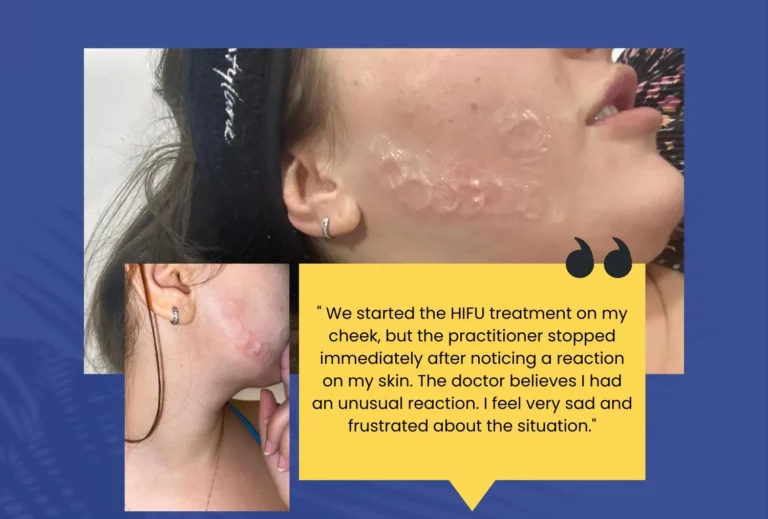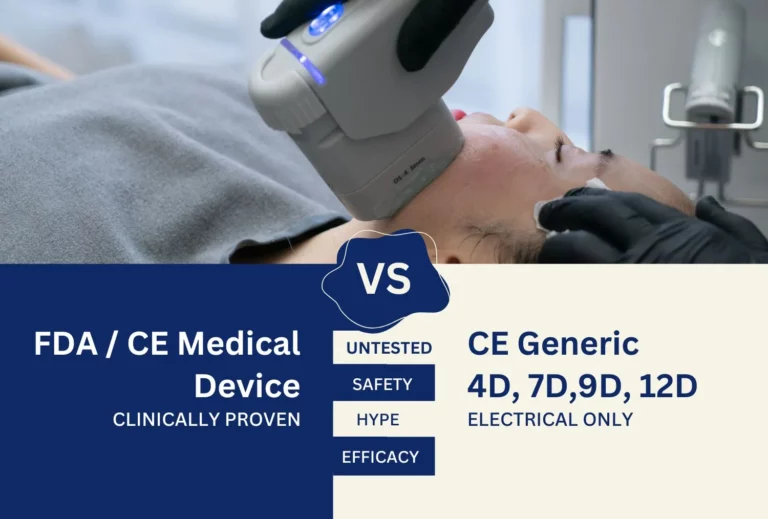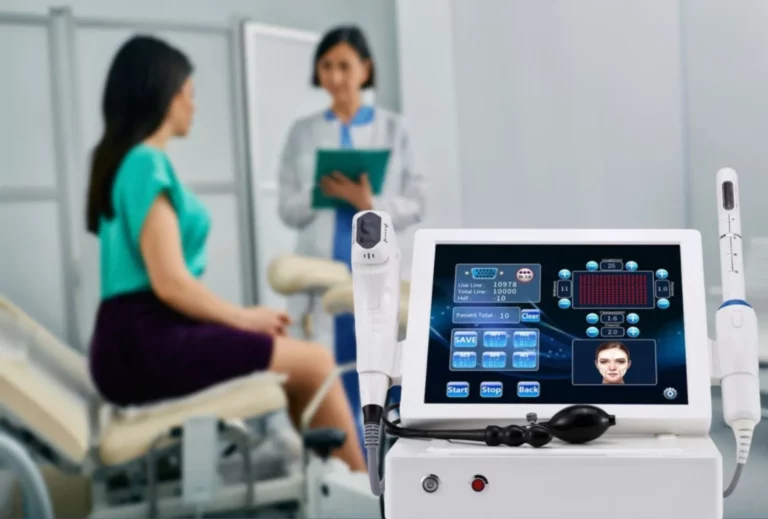How does HIFU work at the cellular level?
When HIFU waves focus on specific points under the skin, they create microscopic areas of thermal damageIn these areas, the temperature rises sharply, leading to:
- Coagulation of old collagen: Protein fibers contract, creating an immediate but short-lived lift effect.
- Fibroblast activation: The fibroblasts that are located around these microscopic areas of damage register the change. This "wakes them up" and gives them the signal to begin the repair process.
- Synthesis of new collagen: In response to this signal, fibroblasts begin to actively produce new collagenThis process is known as neocollagenesis.
It is this process of synthesizing new collagen, which lasts for weeks and even months after the procedure, is the reason for the long-lasting improvement in skin elasticity and firmness.
Telomeres and the Hayflick Cellular Limit
All cells in the body, including fibroblasts, divide a limited number of times during their lifetime. This is known as Hayflick limitIt is directly related to telomere shortening – the protective ends of our chromosomes. With each division, telomeres get shorter. When they get too short, the cell stops dividing and enters a state of senescence (cellular aging) or dies.
Even stem cells, which have the enzyme telomerase to repair telomeres, cannot do so indefinitely. Eventually, their potential is exhausted.
Regenerative capacity decreases with age
As we age, the number and activity of fibroblasts and other cells decline. They become less effective at producing new collagen, while the process of breaking down old collagen continues. This is one of the main reasons for the appearance of wrinkles and loss of elasticity. When the body is exhausted from chronic stress, malnutrition, or illness, this process accelerates.
Can HIFU procedures reverse aging?
HIFU therapy is not a miracle cure for biological aging. It cannot “reset” the cell division counter or lengthen telomeres. Instead, HIFU optimizes the existing resource for a certain period of time. Imagine that your body is a collagen factory that works at 50% capacity. HIFU is like an inspection that gives a signal to the workers (fibroblasts) to activate and work at 80% capacity for a certain period of time.
Over time, however, the workers (fibroblasts) will age and the factory (the body) will begin to wear out. HIFU procedures can be repeated, but the results will become weaker over time because the body's own resources have decreased. This is why HIFU therapy is not a panacea for eternal youth, but a tool for management of aging processesIt works best when there are sufficient cellular resources to be stimulated.
Why can too frequent exposure to ultrasound stimulation have a negative impact on the skin's cellular resource and potentially accelerate some aspects of aging?
1. Lack of time for recovery and synthesis of new collagen
The process of neocollagenesis (production of new collagen) is most intense in the first 3 to 6 months after the procedure. During this period, the foundations of the new collagen structure are formed. To achieve maximum and long-lasting effect, time is needed for maturation and strengthening of new fibers, which continues until 12 monthsThat is why most specialists recommend that the procedure be done at intervals of 12 to 18 monthsto allow the body to complete the entire regenerative cycle. If you undergo a new HIFU treatment before this process is complete, you:
- You interrupt the natural cycle: Instead of allowing the fibroblasts to finish producing the new fibers, you subject them to new stress, which can disrupt the normal formation of the structure.
- You are “bombarding” the body: Constant stimulation with ultrasound waves may be perceived by the body as chronic trauma, rather than a one-time signal for recovery.
2. Risk of fibroblast “depletion”
As we have already discussed, fibroblasts have a limited number of divisions (Hayflick limit). Although HIFU does not destroy them en masse, their frequent activation can be seen as accelerating their life cycle.
- Accelerated division: In response to stimulation, some fibroblasts may divide more frequently to increase their numbers and aid in repair. This, while beneficial in the short term, shortens their telomeres more quickly.
- Diminishing efficiency: As we age, fibroblasts become less efficient. Frequent stimulation of them, especially when their resource is already reduced, can lead to a state in which they simply cannot respond adequately to the signal. Each subsequent cycle of HIFU will likely yield increasingly poor results, as the cellular resource that needs to be stimulated gradually becomes depleted.
3. Potential risk of fibrosis
With too frequent and aggressive effects, instead of producing healthy and elastic collagen, fibroblasts can begin to synthesize dense, inelastic connective tissue, known as fibrosisThis is the body's defense mechanism to deal with chronic inflammation or injury. In this case, instead of getting smooth and tight skin, it can take on a harder and unnatural appearance.
Recommended practice
Most specialists and manufacturers of HIFU equipment recommend that the procedure be performed at intervals of 12 to 18 monthsThis recommendation is not accidental. It is based on scientific knowledge about how long it takes for the body to fully complete the neocollagenesis process and recover.
Conclusion: HIFU is a technology that stimulates the skin to regenerate itselfWith each passing decade, however, cells responsible for collagen production, decrease. Their constant stimulation can overload them and lead to the opposite effect. When observing safety conditions and using reliable equipment, observations in the short and medium term (6-18 months) are positive. However, long-term results of continued use (10+ years) are still unpredictable.



